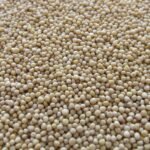Let’s cut to the chase, foodies! Today, we’re about to embark on a culinary exploration of one of the most revered and versatile ingredients in our kitchens – balsamic vinegar. Buckle up, it’s going to be a flavorsome ride!
Origins of Balsamic Vinegar
Rolling back the pages of history, balsamic vinegar, or “Aceto Balsamico,” hails from the beautiful regions of Modena and Reggio Emilia in Italy. This rich, syrupy, and tantalizingly tangy condiment dates back to the Middle Ages.
But, don’t let the “vinegar” in its name fool you. Oh no, this is no ordinary vinegar. In fact, the word “balsamico” means “balsam-like,” pointing to its restorative and curative properties.
The Many Faces of Balsamic Vinegar
Before we dive into the balsamic pool, it’s worth noting that not all balsamic vinegars are created equal. Here are the main types:
- Traditional Balsamic Vinegar (Aceto Balsamico Tradizionale): The real deal. Made from reduced grape juice, aged for at least 12 years, and certified by the Italian authorities.
- Balsamic Vinegar of Modena (IGP): A more affordable and accessible version, made with grape must and wine vinegar, with a minimum aging of 60 days.
- Condimento Grade Balsamic Vinegar: A sort of “in-between” category for vinegars that don’t quite meet the stringent standards of the two above but are still of high quality.

With its complex flavor profile, balsamic vinegar can add a dash of sophistication to salads, grilled vegetables, meats, and even desserts. Is there anything this condiment can’t do?
Nutritional Benefits and Values of Balsamic Vinegar
Despite its sweet and indulgent flavor, balsamic vinegar is low in calories and fat, making it a guilt-free addition to your meals. It’s also packed with bioactive compounds like acetic acid and antioxidants, which have been linked to numerous health benefits.
| Nutrient | Value per 100g |
|---|---|
| Calories | 88 kcal |
| Fat | 0 g |
| Protein | 0.49 g |
| Carbohydrates | 17.03 g |
| Sugar | 14.95 g |
Frequently Asked Questions
1. Can I substitute balsamic vinegar with any other vinegar?
While it’s possible to substitute balsamic vinegar with other types, none will quite replicate its unique flavor profile. If you’re in a pinch, red wine vinegar with a touch of sugar can serve as a makeshift replacement.
2. Does balsamic vinegar go bad?
Balsamic vinegar is a long-lasting product, and when stored properly in a cool and dark place, it can last indefinitely. However, over time, it might lose some of its distinct flavors.
3. Is balsamic vinegar healthy?
Yes, when used in moderation, it can be a part of a healthy diet. Just be mindful of its sugar content.
Summing Up Balsamic Vinegar
Well, there you have it! From its historical roots to its splendid versatility and surprising health benefits, balsamic vinegar certainly proves itself as a noteworthy component of any culinary repertoire. Don’t just reserve it for special occasions; explore its full potential in your everyday meals.
Remember, the best dishes aren’t just made with ingredients, they’re made with passion, creativity, and a dash of balsamic!
Fun Facts
- The very first recorded reference to balsamic vinegar dates back to 1046.
- Traditional balsamic vinegar barrels are made from different types of wood to impart various flavors during the aging process.
- Some traditional balsamic vinegars are aged for over 25 years, and are often referred to as “extravecchio”.
Source: ift.onlinelibrary.wiley.com




